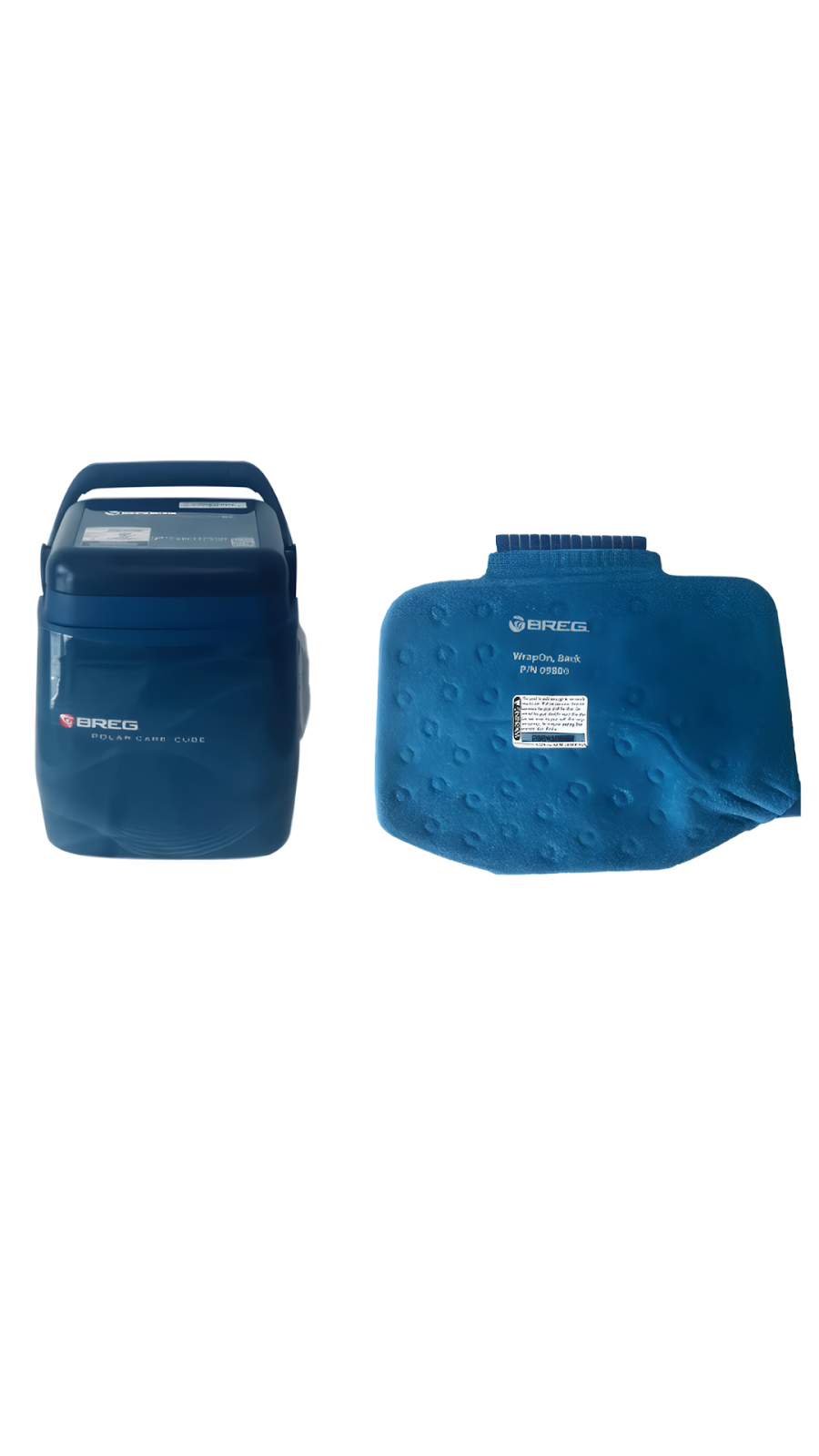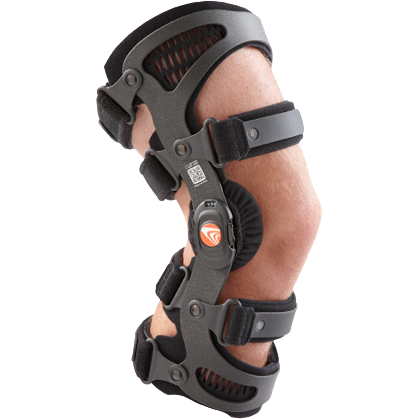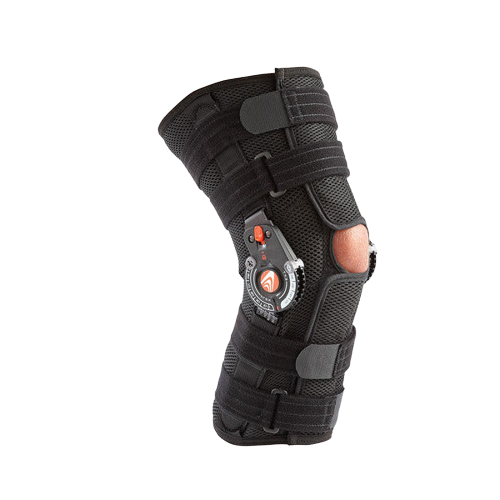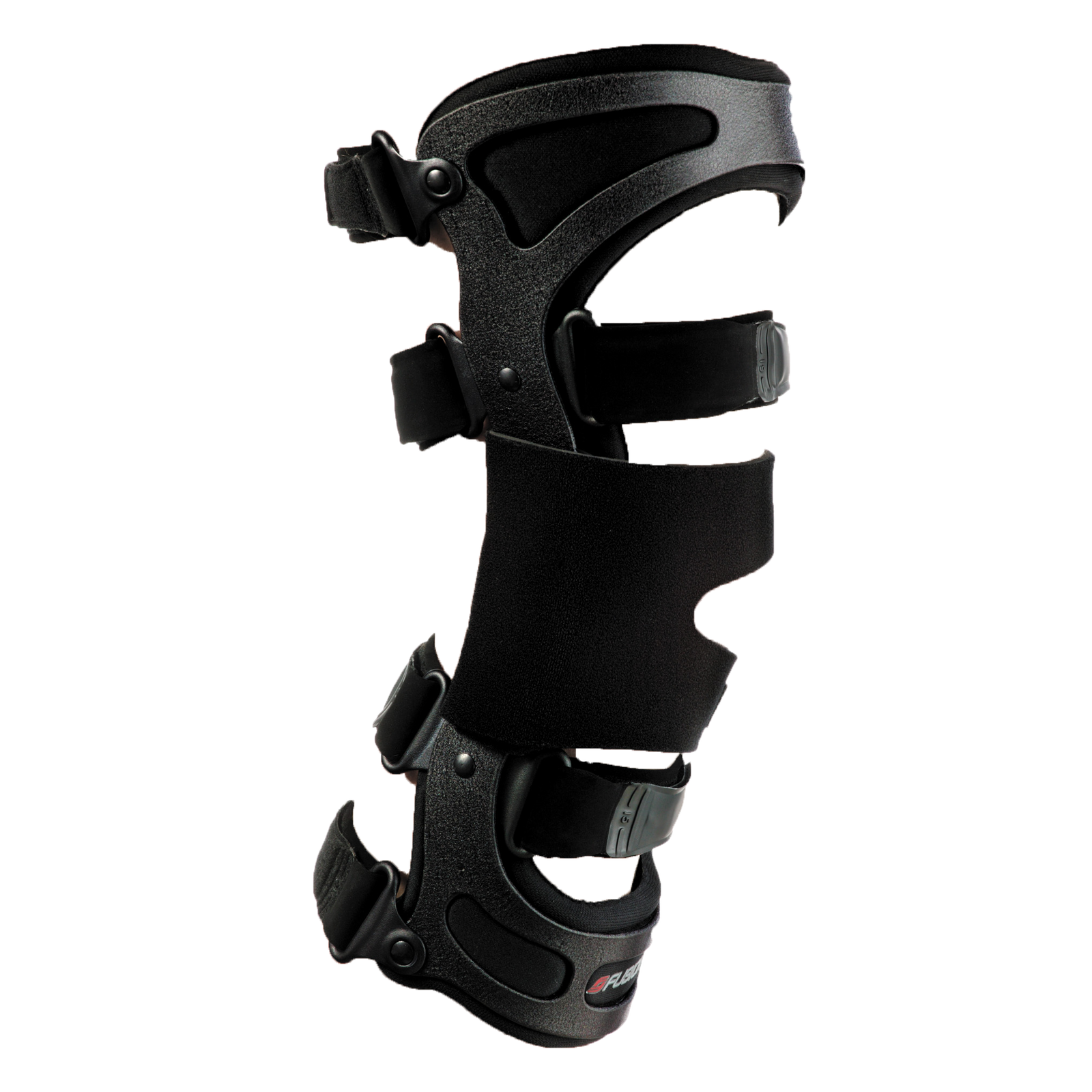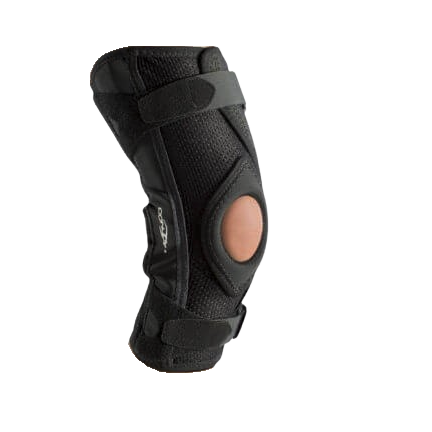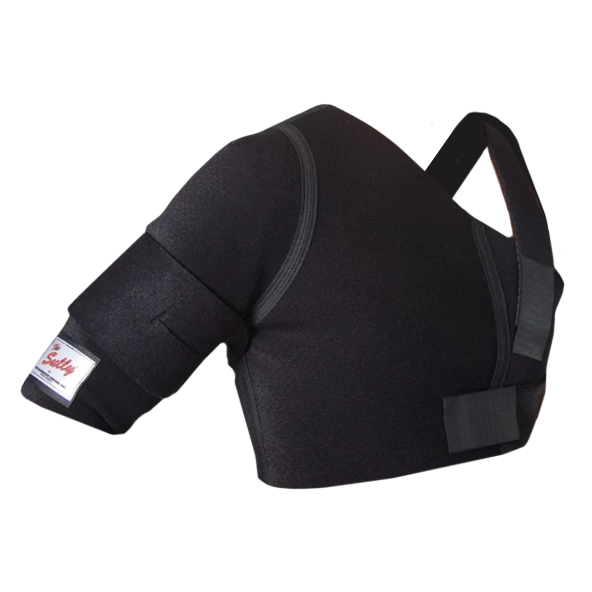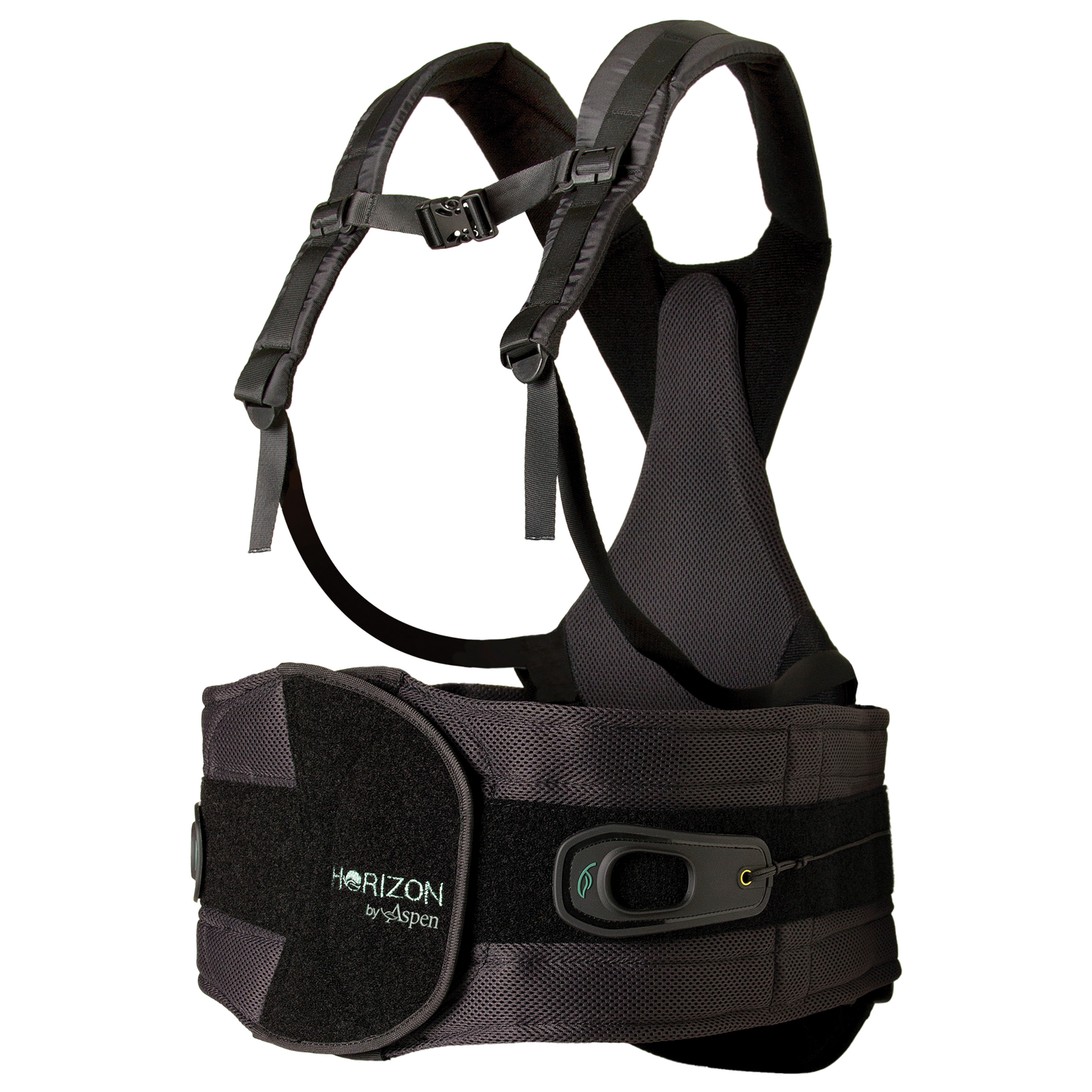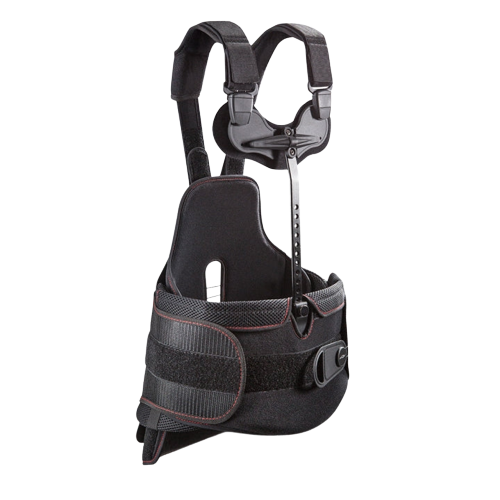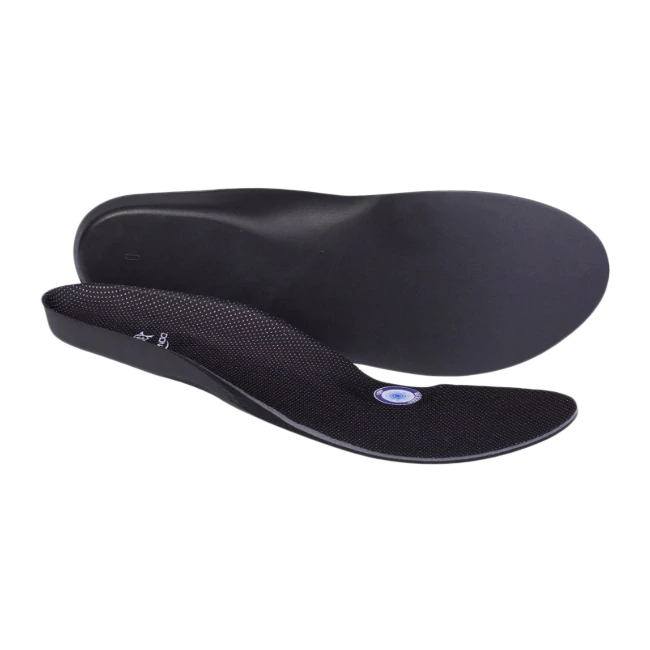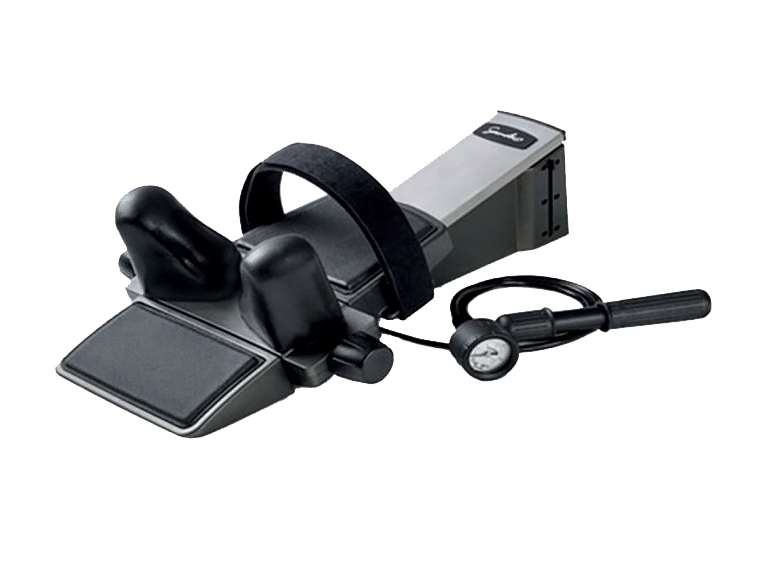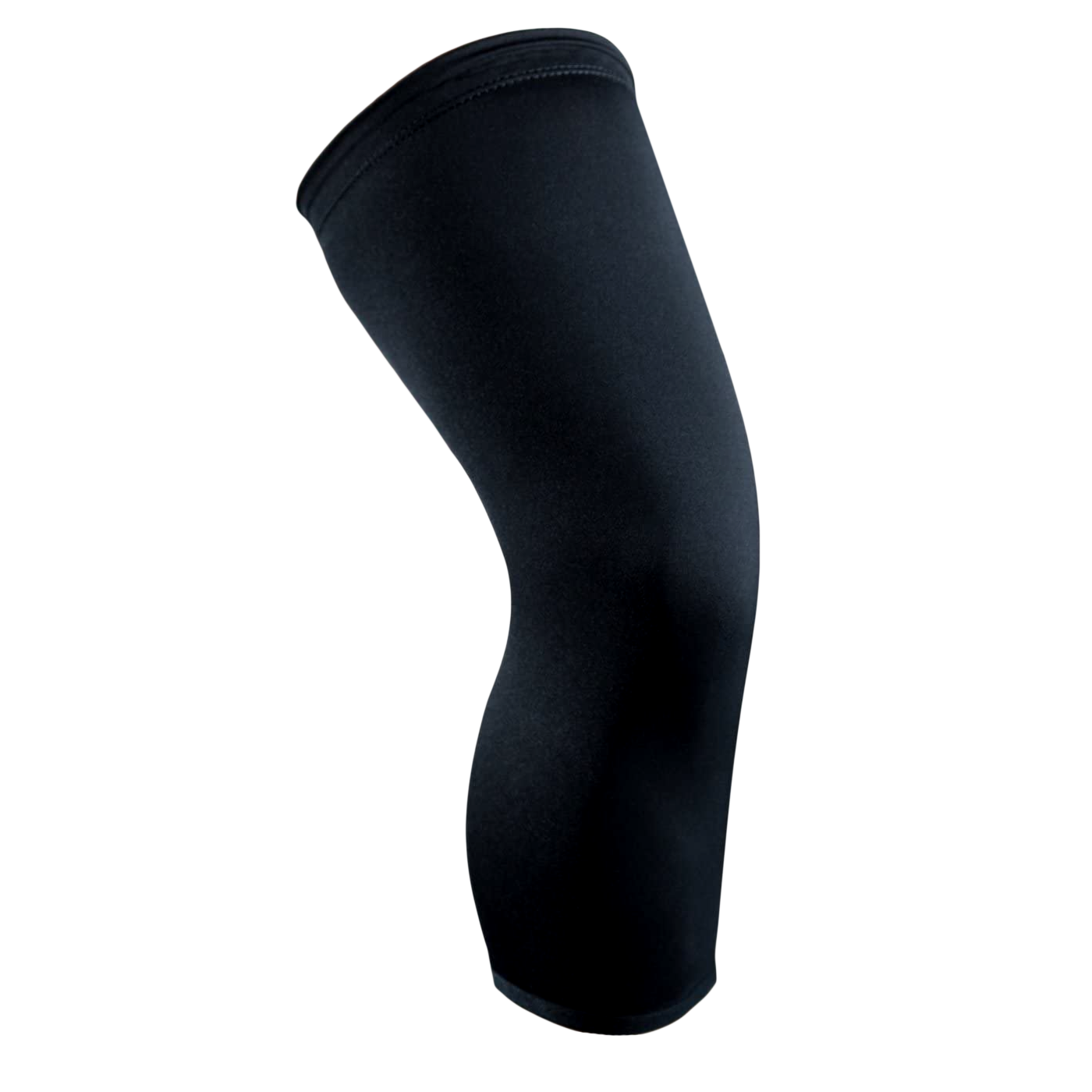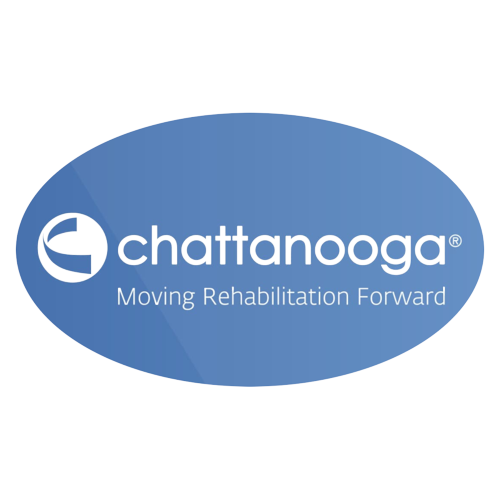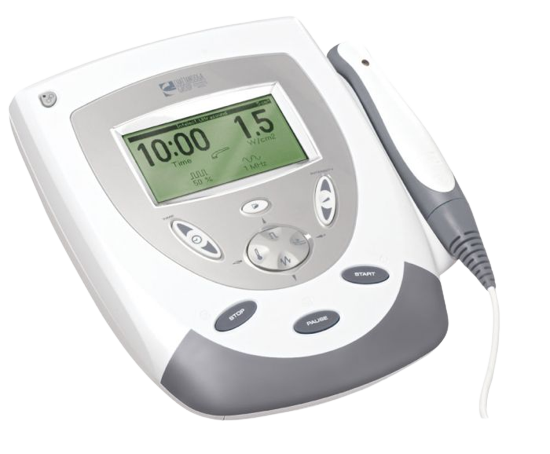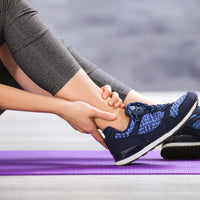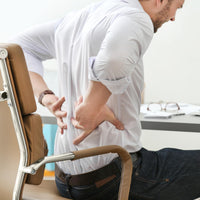
Key Takeaways:
- Manage Pain Effectively: Use cold therapy, proper sling usage, and prescribed pain medications to reduce post-surgery pain and inflammation, setting a solid foundation for recovery.
- Prioritize Physical Therapy: Engage in structured physical therapy exercises tailored to each stage of recovery to restore mobility and strengthen your shoulder without overloading it.
- Focus on Nutrition and Rest: A diet rich in proteins, omega-3s, and vitamins, alongside ample rest, provides essential support for tissue repair, bone health, and overall recovery.
At OrthoBracing, we’re dedicated to helping you feel like yourself again after shoulder surgery. With our high-quality braces and expert resources, we’re here to support your journey to full mobility, empowering you to recover with strength, confidence, and resilience.
Shoulder surgery can be more than just a physical hurdle—it can disrupt your entire way of life. The stiffness, the aches, and the frustration of limited movement can feel overwhelming, especially when it keeps you from doing the activities you love, from working out to everyday tasks. The path to recovery can be long, testing your patience and endurance each day.
In this article, we’ll share essential tips to help you actively support your shoulder’s recovery. You’ll find guidance on managing pain, restoring mobility, and safely rebuilding strength, giving you the tools to take charge of your healing journey and return to the life you’re passionate about.
Shoulder Surgery Recovery Timeline: What To Expect
Recovery from shoulder surgery is a process that varies greatly among individuals, depending on the specific procedure performed, the patient's general health, and adherence to post-surgery recovery protocols. However, understanding the general timeline and what to expect at each stage can greatly aid in planning for a smooth and efficient recovery.
Immediate Post-Surgery (0-2 Weeks)
During this initial phase, the primary focus is managing pain and reducing inflammation. Patients will likely be advised to use a sling to immobilize the shoulder, limiting movement to promote healing. It's crucial to follow your doctor's recommendations on pain management and to utilize cold therapy to alleviate pain and swelling. Our selection of cold therapy machines from reputable brands like AirCast and DonJoy are designed to provide targeted, therapeutic cooling to the shoulder, reducing discomfort and accelerating the initial stages of healing.
Early Recovery (2-6 Weeks)
As you progress into the early recovery stage, your doctor may recommend beginning gentle, passive exercises. These exercises aim to prevent stiffness and improve range of motion without straining the healing tissues. Stick strictly to the exercises your healthcare provider prescribes to ensure optimal recovery.
Active Recovery (6-12 Weeks)
By this phase, patients often start more active rehabilitation exercises to strengthen the shoulder muscles and restore full range of motion. It's important to maintain open communication with your physical therapist and adhere to the regimen they set out for you, as doing too much too soon can be detrimental to your recovery.
Advanced Recovery And Return to Normal Activities (3-6 Months)
This phase sees the gradual return to everyday activities, including sports and heavy lifting, as permitted by your healthcare team. The focus is on rebuilding strength and endurance without compromising the integrity of your shoulder repair.
How To Manage Pain After Shoulder Surgery: Effective Strategies
Recovering from shoulder surgery can be a challenging journey, but managing post-surgical pain effectively is crucial for a smoother and quicker healing process. Here are several strategies that alleviate pain and support your recovery journey.
Cold Therapy
In the initial stages of recovery, swelling and inflammation around the shoulder can significantly contribute to pain. Utilizing cold therapy can be highly effective in reducing these symptoms and providing relief. Products from high-quality brands like Aircast and DonJoy, available through our selection, are designed for ease of use and optimal cooling, helping manage pain effectively.
Proper Sling Usage
Ensuring proper shoulder support post-surgery is vital. Slings offer support, comfort, and ease of adjustment. Wearing your sling as directed by your healthcare provider can help reduce pain by limiting the movement of your shoulder, thereby aiding in the healing process.
Pain Medication
Following your doctor’s advice on pain medication is another cornerstone of managing pain after shoulder surgery. Whether over-the-counter pain relievers or prescription medication, taking them as prescribed can provide significant relief, allowing you to rest more comfortably and participate in physical therapy with less discomfort.
Physical Therapy And Gentle Exercises
Engaging in physical therapy under the guidance of a licensed physiotherapist is integral to recovery. Gentle exercises designed for your specific stage of healing not only aid in reducing stiffness and pain but also encourage proper healing.
Rest And Elevation
Don't underestimate the power of rest and proper positioning in your recovery journey. Elevating your shoulder to reduce swelling and resting adequately to allow your body to heal are simple yet effective pain management strategies. Ensure your sleeping position supports your recovery, using specialized pillows, if necessary, to maintain a comfortable position that encourages healing.
Stay Consistent With Follow-Up Appointments
Regular check-ups with your healthcare provider are crucial for monitoring your recovery and managing your pain effectively. These appointments allow for adjustments in your pain management plan as you progress through the healing stages, ensuring you're on the fastest track to recovery.
The Role Of Physical Therapy In Speeding Up Shoulder Surgery Recovery
Physical therapy is a cornerstone of shoulder surgery recovery, crucially helping patients regain strength, mobility, and functionality in the affected area. Tailored physical therapy programs are not one-size-fits-all; they are customized to meet each individual's specific needs and recovery goals. Understanding the value and process of physical therapy can significantly speed up the healing process after shoulder surgery.
Individualized Evaluation And Treatment Planning
The journey to recovery begins with a detailed evaluation by a licensed physical therapist. This assessment lets the therapist understand the patient's pre-surgery condition, surgical procedure details, and overall health. Based on this evaluation, a personalized treatment plan focuses on reducing pain, improving range of motion, and strengthening the muscles around the shoulder joint.
Pain Management And Reduction Of Swelling
Managing pain and minimizing swelling are primary concerns in the initial stages of recovery. Physical therapists employ various techniques, including manual therapy, therapeutic exercises, and ice or heat application, to achieve these goals.
Restoration Of Mobility And Strength
As recovery progresses, the focus shifts to restoring mobility and rebuilding strength. Guided exercises and stretches are gradually introduced to increase flexibility and improve the range of motion. Resistance training is also incorporated to build the strength of shoulder muscles and support structures. By carefully increasing the intensity and complexity of exercises under the supervision of a physical therapist, patients can safely accelerate their recovery.
Functional Training And Education
A critical component of physical therapy is functional training, which prepares patients to confidently return to their daily activities, work, or sports. Therapists work with patients to practice and perfect movements essential to their daily lives, ensuring a smooth transition back to normalcy. Educating patients about proper posture, ergonomics, and shoulder mechanics is a vital part of this process, helping to prevent future injuries and maintain shoulder health long-term.
Commitment To Ongoing Support
Recovery from shoulder surgery is a journey that extends beyond the walls of the physical therapy clinic. Patients are equipped with home exercise plans and lifestyle advice to continue their progress independently. Regular follow-up sessions enable therapists to adjust treatment plans and ensure patients remain on track toward recovery goals.
Essential Exercises To Speed Up Recovery
Here, we outline some essential exercises often suggested during the shoulder surgery recovery phase. However, it’s imperative to consult with your healthcare provider before initiating any new exercise regimen to ensure it's tailored to your specific recovery needs.
Pendulum Exercises
Pendulum exercises are usually one of the first steps in the post-operative recovery journey. These gentle exercises help decrease stiffness and increase mobility in the shoulder. To perform a pendulum exercise, lean slightly forward, allowing your affected arm to dangle freely. Then, gently swing your arm in small circles or back and forth. This motion should be gravity-driven, with minimal effort from your muscles.
Passive Range Of Motion Exercises
Early in your recovery, your doctor or physical therapist might recommend passive range-of-motion exercises. These exercises involve someone else, such as a therapist, moving your arm for you without your muscles contracting. This helps maintain joint flexibility without straining the healing tissues.
Isometric Shoulder Exercises
Isometric exercises involve muscle contractions without actual joint movement. They can be beneficial as they strengthen the muscles around your shoulder without placing undue stress on the joint itself. Pressing your palm against a wall and holding it for a few seconds before releasing can be an effective way to start.
Wall Walks
As your recovery progresses, wall walks can be a valuable exercise to regain your range of motion. Standing a short distance from a wall, use your fingers to 'walk' your hand up the wall as high as possible without discomfort. Similarly, you can also ‘walk’ your fingers sideways to improve shoulder mobility in different directions.
Shoulder Blade Squeezes
Improving the stability and strength of the muscles around your shoulder blade (scapula) is crucial for your recovery. Shoulder blade squeezes, where you gently pull your shoulder blades together as if trying to hold a pencil between them, can improve posture and support your recovering shoulder.
Nourishing Your Body: Best Foods For Accelerating Shoulder Healing
A crucial component of speeding up your shoulder surgery recovery is providing your body with the right nutrients to repair tissue, reduce inflammation, and strengthen bones. A balanced diet rich in vitamins, minerals, and other essential nutrients accelerates healing. Here are some of the top foods to include in your diet during recovery:
Protein-Rich Foods
Protein is foundational for repairing muscle and tissue. Lean meats like chicken, turkey, and fish, as well as plant-based sources such as beans, lentils, and tofu, are excellent choices.
Omega-3 Fatty Acids
Foods high in omega-3 fatty acids, like salmon, walnuts, and flaxseeds, can help reduce inflammation, which is critical for shoulder surgery recovery.
Fruits And Vegetables
These are high in vitamins and minerals essential for healing. Vitamin C, found in citrus fruits, strawberries, bell peppers, and broccoli, is particularly important for repairing tissues and making collagen. Dark, leafy greens like spinach and kale are rich in Vitamin A, which supports the immune system and is vital for bone formation.
Whole Grains
Foods like brown rice, quinoa, and whole wheat bread give your body the energy it needs to heal. They are also fiber-rich, which is necessary for digestive health during recovery.
Dairy Or Fortified Alternatives
Calcium and vitamin D are crucial for bone health. Milk, cheese, and yogurt, or fortified plant-based alternatives, can support the rebuilding of bone around the surgical site.
Nuts And Seeds
Snacks like almonds, pumpkin seeds, and chia seeds are easy to eat and are packed with nutrients that support healing. Magnesium, found in these foods, is especially important for muscle and nerve function.
Hydration
Though not a food, staying well-hydrated is fundamental to healing. Water aids in transporting nutrients to the recovery site and helps flush out toxins from the body. Aim to drink at least eight glasses of water a day.
Common Shoulder Surgery Complications And How To Avoid Them
Shoulder surgery can be crucial to regain function and reduce pain for many individuals. However, like any surgical procedure, there are potential complications that patients should be aware of. Understanding these complications and how to avoid them is a key part of a successful recovery. Here are some common complications and strategies to prevent them:
Infection
Post-surgery infection is a risk, albeit a minimal one, with any type of surgical procedure. To reduce the risk of infection:
- Follow your surgeon's wound care instructions meticulously.
- Keep the surgical area clean and dry.
- Alert your healthcare provider if you notice signs of infection, such as redness, increased swelling, or a fever.
Stiffness and Loss of Mobility
One of the more common issues following shoulder surgery is stiffness or a loss of mobility in the shoulder joint. To combat this:
- Engage in prescribed physical therapy and rehabilitation exercises. Consistency is key.
- Cold therapy can reduce swelling, which can, in turn, help maintain motion.
Shoulder Instability
After surgery, the shoulder may temporarily weaken and become more prone to instability or dislocation. To prevent this:
- Wear any slings or support devices as your healthcare provider directs to stabilize the shoulder during the initial healing phase.
- Avoid movements or activities that put undue stress on the shoulder until it has sufficiently healed.
Rotator Cuff Injuries
In some cases, the rotator cuff can be injured or strained during the recovery process. To avoid damaging this area:
- Strictly adhere to weight and movement restrictions in the weeks following your surgery.
- Gradually increase the intensity of your physical therapy exercises under the guidance of a professional to strengthen the shoulder without overexertion.
Nerve Damage
Although rare, there is a risk of nerve damage during shoulder surgery, which can result in weakness, numbness, or a loss of function. To minimize this risk:
- Choose a highly skilled orthopedic surgeon with experience in shoulder procedures.
- Communicate any concerns or symptoms with your medical team promptly.
When To Seek Professional Help: Signs To Watch For
While experiencing some discomfort is a normal part of the healing journey, certain signs may indicate a need for professional intervention. It's crucial to differentiate between the typical recovery trajectory and symptoms that could suggest complications. Here are signs to watch for during your shoulder surgery recovery:
Persistent Or Increasing Pain
While some degree of pain is expected following surgery, it should gradually decrease as days pass, especially with the appropriate use of prescribed pain relief methods and medication. If you experience pain that persists beyond the expected timeframe, intensifies, or suddenly emerges after a period of improvement, it's important to consult your healthcare provider. Persistent or increasing pain could signify infection, inflammation, or other complications necessitating professional attention.
Unusual Swelling Or Redness
Swelling around the surgical site is normal initially but should start to reduce over time with proper elevation, icing, and, if recommended by your doctor, the use of high-quality cold therapy machines from trusted brands. However, if the swelling increases or you observe excessive redness or warmth in the area, these could be signs of infection or other issues. It's essential to seek medical advice without delay in such cases.
Difficulty In Movement Or Lack Of Progress
Your healthcare team should provide you with a tailored rehabilitation plan designed to gradually restore mobility and strength to your shoulder. Professional guidance is needed if you encounter substantial difficulties in performing exercises within the outlined program or if progress halts for an extended period. This might involve adjusting your rehabilitation strategy or further investigation to ensure optimal recovery.
Fever Or Unexplained Symptoms
A fever or unexplained symptoms such as chills, nausea, or uncontrolled shaking should be treated with immediate concern. These could indicate an infection or other serious complications requiring prompt medical intervention.
Reduced Sensation Or Numbness
A temporary loss of sensation around the incision site is normal. However, contact your medical provider if you notice persistent or widespread numbness, tingling, or a complete loss of sensation in your shoulder or arm. These could be signs of nerve damage or complications related to the surgery.
Accelerate Your Recovery: Expert Tips For A Smooth Journey
Speeding up recovery after surgery requires a well-rounded approach, focusing on physical care, nutrition, mental well-being, and following medical guidelines. Here are expert-backed strategies to help you heal faster and get back on your feet sooner.
Get Enough Rest, But Stay Active
- Balance Rest with Movement: Rest is essential for healing, but too much can lead to stiffness and weaken muscles. Incorporate short, gentle walks to stimulate circulation and prevent blood clots.
- Follow Your Doctor’s Activity Guidelines: Reintroduce activities as your body allows, sticking to exercises that support your mobility and avoid strain.
Prioritize Wound Care
- Keep the Incision Clean and Dry: Follow your doctor’s instructions for cleaning the wound to avoid infections. Do not soak it in water until it is fully healed.
- Use Wound-Care Products Carefully: Once approved, you may apply topical treatments or dressings to minimize scarring and speed up tissue repair.
Start Physical Therapy (If Recommended)
- Gentle Rehab Exercises: Physical therapy can prevent stiffness and improve range of motion. Working with a therapist ensures you’re doing safe exercises tailored to your healing stage.
- Consistency Over Intensity: Gentle exercises consistently are more effective for recovery than high-intensity sessions, which may strain healing tissues.
Manage Stress And Emotional Well-Being
- Engage in Mindfulness Practices: Stress can impact healing. Techniques like meditation, breathing exercises, or journaling can help you feel more relaxed and focused on recovery.
- Seek Support from Loved Ones: Emotional support from friends and family can boost morale and motivate you. Recovery can be isolating, and staying connected is important.
Avoid Smoking And Alcohol
- Quit Smoking: Smoking restricts blood flow and delays healing.¹ Consider quitting or significantly reducing your intake during recovery.
- Limit Alcohol: Alcohol can interfere with pain medication and disrupt your sleep. Reducing intake aids healing and helps you stay well-rested.
Attend All Follow-Up Appointments
- Monitor Your Progress: Regular check-ups allow your doctor to assess your healing, adjust your care plan, and spot any potential issues early.
- Ask Questions: Use these appointments to discuss any discomfort, unusual symptoms, or progress on activity levels.
Final Thoughts
Managing your shoulder surgery recovery effectively is pivotal to achieving the best possible outcomes and regaining full functionality. Remember, although the journey to recovery may seem daunting, integrating our shoulder surgery recovery tips into your regimen can significantly expedite your healing process. These strategies, from maintaining a positive mindset, engaging in prescribed physical therapy sessions, to employing cold therapy for appropriate lengths of time, are instrumental in your rehabilitation.
At OthroBracing, we understand the importance of utilizing high-quality recovery aids. We are dedicated to providing products from leading brands like AirCast, Breg, Chattanooga, DonJoy, and Exos. Our selection is tailored to enhance your recovery experience, offering unparalleled pain relief and support during your healing journey. Embracing our recovery solutions, complemented by our professional advice, positions you for a smoother and more efficient healing process.
Read also:
- Top Shoulder Rehab Exercises For Faster Recovery
- How To Use An Ice Machine For Shoulder Surgery
- How To Use A Game Ready Ice Machine: Step-By-Step Guide
Frequently Asked Questions About Shoulder Surgery Recovery Tips
How long does it typically take to recover from shoulder surgery?
The recovery time from shoulder surgery can vary significantly depending on the type of surgery performed, the patient's general health, and how well post-surgery instructions are followed. On average, recovery can take a few weeks to several months. Adhering to rehabilitation and therapy plans is crucial for a successful recovery. It's important to have realistic expectations and patience during this time.
Is it normal to experience swelling, and how can I reduce it?
Yes, experiencing swelling after shoulder surgery is completely normal and is part of the body's natural healing process. To reduce swelling, you can apply cold therapy for short periods, typically 15-20 minutes, several times daily.
When is it safe to return to driving after shoulder surgery?
The safe timeline for returning to driving varies for each individual and depends on the extent of the surgery, the side of the surgery, and personal recovery progress. Generally, it is advisable to wait until you can operate the vehicle safely without experiencing pain, which might be several weeks. Always consult with your healthcare provider for personalized advice before getting back behind the wheel.
What sleep positions are recommended for someone who has had shoulder surgery?
After shoulder surgery, sleeping on your back with your upper body slightly elevated to reduce swelling and discomfort is best. Using a recliner or propping yourself up with pillows can provide support and help maintain a comfortable position throughout the night. Avoid sleeping on the operated shoulder to prevent unnecessary strain and pain.
What are the signs of infection I should watch for after my procedure?
Be vigilant for signs of infection, including increased redness, swelling, warmth at the surgery site, fever above 101°F (38.3°C), chills, or unusual discharge from the incision. If you experience these symptoms, contact your healthcare provider immediately to prevent further complications.
What should I wear to accommodate my shoulder after surgery?
Opt for loose, comfortable clothing that can be easily put on and removed without straining your shoulder. Button-up shirts, blouses, or clothing with front zippers are ideal options to accommodate dressing while minimizing discomfort and strain on your shoulder during recovery.
Sources:
- Silverstein, P. (1992). Smoking and wound healing. The American Journal of Medicine, 93(1A), 22S24S. https://doi.org/10.1016/0002-9343(92)90623-j

